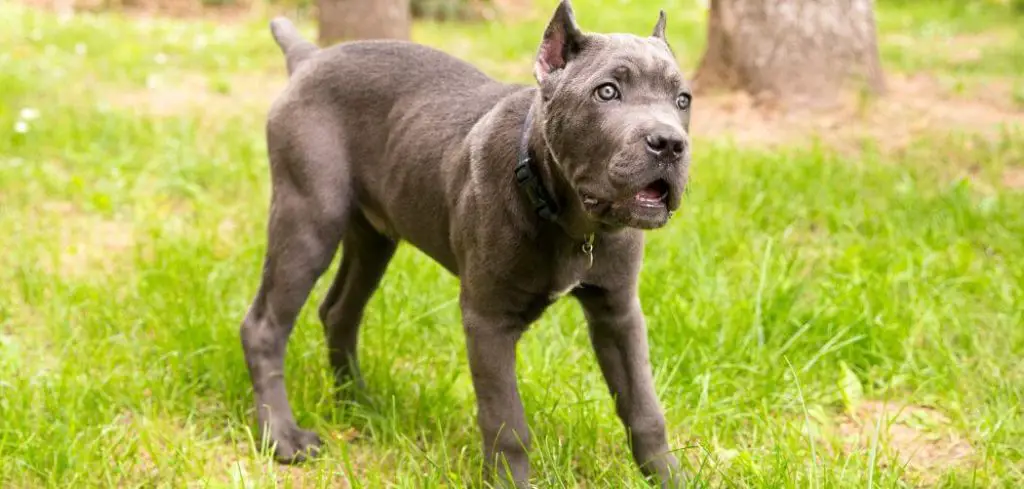A dog excessively chasing its tail can be amusing at first, but when the behavior becomes frequent or obsessive, it can point to underlying medical or behavioral concerns.
We outline the common reasons for excessive tail chasing in dogs, what you can do at home, and when to seek veterinary help.
Dog Excessively Biting Tail — Why It Happens
Dogs may excessively chase their tails due to allergies, skin irritation, anal gland problems, boredom, or even compulsive disorders. Sometimes the behavior is playful and harmless, but in other cases, it may signal discomfort or stress that requires attention.

Dog Excessively Chasing Tail: Common Causes
Allergies and Skin Irritation
Allergies are a common reason dogs fixate on their tails. Food sensitivities, flea bites, or environmental triggers like pollen can cause intense itchiness.
When the tail base or rump feels irritated, your dog may repeatedly spin and chase to scratch the area.
You might also notice redness, chewing, or fur loss near the tail. Left untreated, the constant irritation can worsen and lead to infections, making prompt care important.
Read more: Dog Excessively Biting Tail (What means)
Anal Gland Problems
Dogs have small anal glands near the base of their tail that can become full, blocked, or infected. When this happens, your dog may chase and lick the tail area in an attempt to relieve the discomfort.
Scooting, foul odors, or swelling near the rear often accompany anal gland issues. This is more than just a quirky habit—it’s painful for your dog and can lead to abscesses if ignored.
Boredom and Lack of Stimulation
Sometimes excessive tail chasing is less about physical discomfort and more about mental or physical needs not being met. Dogs with pent-up energy or too little mental stimulation may develop repetitive behaviors like tail chasing.
This is particularly common in young, energetic breeds such as Terriers, German Shepherds, and Huskies. The behavior becomes a self-soothing activity but can spiral into obsession if not addressed with enrichment and exercise.
Anxiety and Stress
Dogs can also chase their tails excessively when stressed or anxious. Changes in the household, separation anxiety, or exposure to frightening stimuli can trigger repetitive behaviors.
Chasing the tail provides a sense of distraction or relief from the anxiety, but it signals that your dog’s mental wellbeing needs attention. Over time, the habit may worsen into a compulsive behavior.
Compulsive Disorder
In some cases, tail chasing goes beyond simple play or stress relief and becomes a canine compulsive disorder. This is similar to obsessive-compulsive tendencies in people.
Dogs with compulsive tail chasing often spin for long periods, ignoring commands or food, and may injure themselves in the process. This condition requires veterinary guidance and sometimes medication to manage.
Injury or Parasites
Tail injuries, hot spots, or parasites such as fleas and ticks can all lead to excessive tail attention. If your dog feels pain or irritation, chasing and biting at the tail may be their way of coping.
Inspecting the tail regularly for cuts, swelling, or parasites can help you spot these issues early. Untreated, they may lead to worsening discomfort and secondary infections.
What to Do If Your Dog Is Excessively Chasing Their Tail
Start by observing when and how often the tail chasing occurs. If it happens occasionally during play, it may be harmless. However, frequent or obsessive spinning needs intervention.
At home, make sure your dog has plenty of exercise, toys, and enrichment to reduce boredom. Puzzle feeders, scent games, and regular walks help redirect their energy.
Check your dog’s skin, tail, and rear area for redness, swelling, or parasites. Keep up with flea prevention and ensure their anal glands are checked during vet visits.
If stress seems to be a factor, work on building routines, offering calming toys, or using pheromone diffusers. Dogs that remain anxious or show compulsive behavior should be evaluated by a veterinarian, as medication or behavior therapy may be needed.
Most importantly, avoid encouraging the habit by laughing or rewarding the behavior, even unintentionally. Instead, gently redirect your dog to a healthier activity.
When to Call or Visit Your Vet
Seek veterinary help if your dog’s tail chasing becomes frequent, obsessive, or accompanied by signs of pain or illness.
Red flags include visible wounds, bleeding, or hair loss at the tail, scooting, foul odors, or signs of distress when sitting. If your dog spins for long periods and ignores food or interaction, it may point to a compulsive disorder that needs medical attention.
Parasites, allergies, and anal gland problems all require veterinary diagnosis and treatment. If your dog injures themselves while chasing or seems unable to stop, professional care is the best step.
Read more: Dog Licking Bum Excessively After Grooming (Is it normal?)
Key Takeaway
While occasional tail chasing can be playful and harmless, excessive tail chasing in dogs is often a sign of underlying discomfort, stress, or health problems.
Providing proper exercise, enrichment, and routine vet care can help prevent the behavior from escalating. If your dog’s tail chasing is frequent, injurious, or distressing, consulting a veterinarian ensures your dog gets the right care and relief.
